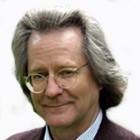
A Skeptical Christmas to You All
A look at the clash of reason with religion, conspiracy and other widely-held beliefs.
In the Guardian:
"I wonder whether, in the dialogue of the deaf that this quarrel has become, a few reminders might be in order. Secularism is the view that religious outlooks, though perfectly entitled to exist and have their say, are not entitled to a bigger slice of the public pie than any other self-constituted, self-appointed, self-selected and self-serving civil society organisation. Yet the religious persistently ask for special treatment: public money for their "faith-based" schools, seats in the House of Lords, exemption from laws inconvenient to their prejudices, and so endlessly on. They even have the cheek to ask for "respect" for their silly and antiquated beliefs; and in Geneva at the Human Rights Council the Islamic countries are trying to subvert the Universal Declaration of Human Rights because it is inconvenient to their medieval, sexist, intolerant outlook.
Secularists in the west say to the apologists of the religions: your beliefs are your choice, so take your place in the queue. They also say: you've had it your own way for a very long time - and committed a lot of crimes in the process - and you still fancy yourself entitled, but you aren't. You don't smell too good at times, so don't try to tell me what I can read, see on TV, do in my private time, think or say. In fact, keep your sticky fingers off my life. Believe what you like but don't expect me to admire or excuse you because of it: rather the contrary, given the fairy-stories in question. And when you are a danger to the lives and liberties of others, which alas is too frequently the wont of your ilk, we will speak out against you as loudly, persistently, and uncompromisingly as we can."
Sometimes I don't feel the need to say more.
 The Natural History Museum has recently released this book about evolution. I'm all up for educating people about evolution, however I've always considered myself to be 100% ape. Am I wrong?
The Natural History Museum has recently released this book about evolution. I'm all up for educating people about evolution, however I've always considered myself to be 100% ape. Am I wrong?

"It could be an alien for all we know"
"The noise is getting louder and louder. I'm scared it's going to come bursting out one evening while we're watching TV."
It is unclear whether they have ruled out rodents."

When God created man and woman, Adam and Eve were both naked and "felt no shame", according to the Bible."




He is the Charles Simonyi Professor for the Public Understanding of Science and tours the world lecturing the elites of the West that they are stupid to believe in any god.
He proselytises against the proselytisers, most of his targets wishing they had a fraction of his apparent certainty.
He is the anti-preacher whose sermons are designed to erode churchgoing and, with that, weaken our happiness.
A man less obsessed with himself and with the narrow calculations of men in white coats might realise that religion, although never offering proof of God's existence, can sugar catastrophe and brighten chasms.
In times of turbulence, the human being is little different from the vole or the dormouse. It will take shelter where it can.
No amount of superior lecturing from an anti-Christ, not even one with so important a title as his, will alter that."
And the LORD said unto Moses, Go, get thee down; for thy people, which thou broughtest out of the land of Egypt, have corrupted themselves:
They have turned aside quickly out of the way which I commanded them: they have made them a molten calf, and have worshipped it, and have sacrificed thereunto, and said, These be thy gods, O Israel, which have brought thee up out of the land of Egypt.
And the LORD said unto Moses, I have seen this people, and, behold, it is a stiffnecked people:
Now therefore let me alone, that my wrath may wax hot against them, and that I may consume them: and I will make of thee a great nation.
So what are these people doing?






Religious believers, when mentioning heaven, have traditionally cast their eyes skywards, but the possibility of an afterlife may now be proved by looking down towards the ground. Doctors at Southampton University are placing pictures in resuscitation areas that can only be seen from the ceiling. These will test the stories of defibrillated patients, who claim they have looked down on the crash teams attending to their lifeless bodies.
This is a pretty good experiment, as long as everybody besides the researches has no clue what the pictures are. Proper double blind trials and all....
The theory is that any of the chest-thumped who successfully play this posthumous game of Where's Wally? must have had an out-of-body experience, rather than the final flashing fantasy of a dying brain.
I's put money on the fantasy, but hopefully this will set the matter straight once and for all. However even if the fantasy theory is the one that fits the evidence I doubt whether some people will change their tune to match.
And this attempt by a scientific profession to test the claims of religion coincides with a less constructive standoff between rationalists and supernaturalists, namely the forced resignation of Professor Michael Reiss, director of education at the Royal Society, after it was reported that he was in favour of "creationism" being discussed in school science lessons. What's whiffy about this incident is the strong suspicion that Reiss, an ordained minister, has been brought down by atheists in the Royal Society who consider religious belief incompatible with scientific practice.
I think that there are plenty of people who consider the two incompatible. If you claim to be part of any religion that I have so far had the misfortune to hear about then the beliefs are incompatible. If you just claim to have some sort of personal god then they may not be.
A fair interpretation of his comments is that he was addressing a serious issue affecting education in a culture which is largely secular, but where a small core of students may profess certain religious beliefs. He was suggesting that scientists should engage and argue with believers, rather than mock or ignore them.
I'm sure we've tried to engage with them before. The greatest thing about science is progress - ideas and theories change with new evidence. The same cannot be said of organised religion.
Such an attempt to subject supernatural beliefs to empirical testing lies behind the resuscitation unit art show. But an objection to the project is that it suffers from the scientific tendency to believe that anything can be proved one way or another. If any of the patients do prove to have seen art from on high, sceptics will hint darkly at collusion with a hospital cleaner. If they don't see them, church-goers will conclude that God cannot be trapped by a brain scan.
I said about double-blind trials, that would eliminate this source of error.
Many people, whatever happens, will remain "don't knows", and this is a smart group to belong to. Both the theories of evolution and quantum physics stumble over the question of first cause: the process by which nothingness became something. It's this zone of unknowability that leads to physicists using such loaded language as "the God particle" and has made evolutionists, especially in the US, vulnerable to the counter-dogma of "intelligent design".
at least scientists are attempting to solve the problem. Religion does not. If there is a god and he was half as intelligent as I am regualrly told, then he would be pondering the reason for his own existence. Religion does not attempt to solve the problem, it just passes the buck to a fictional figure.
Dr Sam Parnia, one of the curators of the crash room gallery, has said: "This is a mystery that we can now subject to scientific study." But, in that sentence, "mystery" is the crucial word. Religion speaks of the "sacred mysteries" - to which an explanation is promised after death - but it has always seemed vital to me that those who reject the sacred continue to respect the mysteries of how and why we are here.
It is mysteries that creates scientists. Scientists love mysteries. Then they try and solve them, which almost inevitably leads to more mysteries.
An interesting experiment in this context involves Richard Dawkins and David Attenborough. They have almost identical beliefs on Darwinism and religion, but their attitudes are radically different: the naturalist retains an element of wonder at the beauties and cruelties of existence that the biologist seems to lack. The possibility of doubt is an important part of belief and unbelief.
This is bollocks of the highest degree. Dawkin's 'Unweaving the Rainbow' shows a genuine love for the natural world, and the science that tries to understand it. If you didn't love the natural world then you would find it very hard to be a scientist.
The novelist Terry Pratchett is exemplary in this respect. Long a proud trophy of the British Humanist Society, the writer recently had the experience of hearing the voice of his dead father telling him all will be well. The fact that this followed diagnosis with a variant of Alzheimer's must increase the possibility that Pratchett's brain was playing tricks on him, but his recent interviews reflect a dent in his scepticism. Both the religious and the scientific should admit to the gaps on their canvases.
Science does admit the gaps. That is the primary difference between it and religion. Scientists are fully aware, and readily admit, that they don't know everything. That is why they still have jobs, there is still stuff to be found out. Yes, we have no explanation at the moment for the cause of the big bang, but that's no reason not to look for one!
2. It was in Hebrew.
3. It had no references.
4. It wasn't published in a refereed journal.
5. Some even doubt he wrote it by himself.
6. It may be true that he created the world, but what has he done since then?
7. His cooperative efforts have been quite limited.
8. The scientific community has had a hard time replicating his results.
9. He never applied to the ethics board for permission to use human subjects.
10. When one experiment went awry he tried to cover it by drowning his subjects.
11. When subjects didn't behave as predicted, he deleted them from the sample.
12. He rarely came to class, just told students to read the book.
13. Some say he had his son teach the class.
14. He expelled his first two students for learning.
15. Although there were only 10 requirements, most of his students failed his tests.
16. His office hours were infrequent and usually held on a mountain top.
17. No record of working well with colleagues




Two men in the US state of Georgia say they have found the body of a Bigfoot, the legendary ape-like creature that has been subject of decades of hoaxes.
Matt Whitton and Rick Dyer say they stumbled across the 2.3m-high (7ft 7in), 226kg (500 pound) corpse in a wood in the north of the state in June.
A photograph on the men's website shows what appears to be the body of a large, hairy creature with an ape-like face.
Bigfoot experts reacted suspiciously to the men's claims.
Bigfoot experts? Anybody can be a Bigfoot expert, there is absolutely no evidence that it exists. An expert opinion would be along the lines of "I am as confident as I can be that it does not exist. If it does exist we know absolutely nothing about it."
"What I've seen so far is not compelling in the least, and I think the pictures cast grave doubts on their claim," said Jeffery Meldrum, a Bigfoot researcher and Idaho State University professor.
"It just looks like a costume with some fake guts thrown on top for effect," he told the Scientific American magazine.
I know nothing about Jeffery Meldrum, hopefully he agrees with my views and uses the term 'Bigfoot researcher' as a quaint joke.
The US Fish and Wildlife Service also said its officers were not taking the claim seriously and would not investigate it.
The most sensible view that we have heard so far!
At a news conference in Palo Alto, California, Mr Whitton and Mr Dyer said they had found the body of a male Bigfoot with reddish hair, "blackish-grey" eyes, and human-like feet and hands while out hiking.
"I recognised it was unusual right away," said Mr Whitton, a police officer. "The first thing that pops into your head is that it's Bigfoot."
They also said they saw three other live creatures while carrying the corpse away.
Perhaps one of these was a bird?
"They were silent," Mr Whitten added.
The two men also brought what they said were the results of DNA tests on the corpse's body tissue which were undertaken by Curt Nelson, a biologist at the University of Minnesota.
According to Mr Nelson, one test showed human DNA, another was inconclusive, while a third came back as the DNA of a possum, which he said could have been from something the Bigfoot had eaten.
If Mr Nelson was told that he was working on the DNA of an alleged Bigfoot he should have realised when the results came back that it was now a fraud.
Bigfoot is a humanoid creature said to wander the wooded wilds of the Pacific Northwest.
Bigfoot is not a humanoid creature, it is an alleged humanoid creature.
Stories of a giant ape roaming the forests of North America date back to before European settlement. But despite occasional footprints and photographs, there has never been much proof of Bigfoot's existence.
There has never been any proof!
Oakland, California, April 15, 2008 — Millions of dollars have been spent promoting Ben Stein’s Expelled: No Intelligence Allowed to fundamentalist church groups, but that money would have been better spent on fact checkers. www.ExpelledExposed.com, a website launched today by the National Center for Science Education (NCSE), reveals the truth behind the creationist movie’s misrepresentations.
“Creationists have been making the same arguments for decades,” says Eugenie C. Scott, executive director of the National Center for Science Education. “They’ve gotten better at marketing these claims, but they’re no more valid now than during the Scopes trial of the 1920s. Creationists have been predicting the death of evolution for over a century, yet it is constantly affirmed by evidence from fields Darwin could never have imagined.” Given the damning assessment at www.ExpelledExposed.com, Scott adds, “Perhaps the filmmakers should have spent more time hitting the books, instead of beating up on hardworking scientists.”
Throughout the movie, Ben Stein claims that “Big Science” represses intelligent design to advance an atheistic agenda, but Peter Hess, from NCSE’s Faith Outreach Project, doesn’t buy it. “There are many successful evolutionary biologists who are also people of faith,” he observes, “and a host of people of faith who regard intelligent design as a misconceived and harmful rejection of science. In attempting to pit Christianity against science, Expelled misrepresents both.”
“We reviewed public records and reports on the intelligent design promoters who were supposedly discriminated against, and we discovered that the claims that they lost their jobs over intelligent design are unsupported,” explains Josh Rosenau, a biologist at NCSE. “That said, professors who aren’t making advances in their field, editors who disregard their journal’s established practices, and lecturers who repeat creationist falsehoods shouldn’t be surprised if they have trouble holding jobs. These people weren’t expelled; they flunked out.” www.ExpelledExposed.com contains information about the “martyrs” from Expelled, and also of real scientists who successfully challenged established science. “The difference,” NCSE researcher Carrie Sager observes, “is that real scientists back their challenges with experimental results. Results are what changed minds, forced textbook revisions, and earned Nobel Prizes.”
More insidious are the movie’s attempts to link evolution to the Holocaust. Susan Spath, a historian of science at NCSE, comments: “The implication that Darwin led to Nazism and the Holocaust is an irresponsible misrepresentation of a terrible history. Hitler abused many things, including science, and Expelled is wrong to shift blame off his shoulders and onto evolution.” www.ExpelledExposed.com quotes the Anti-Defamation League’s Abe Foxman, who described similar claims in a previous creationist movie as “an outrageous and shoddy attempt ... to trivialize the horrors of the Holocaust.”
The National Center for Science Education is a non-profit organization dedicated to defending the teaching of evolution in the public schools. The NCSE maintains its archive of source material on the history of creationism at its Oakland, California, headquarters. On the web at www.ncseweb.org. www.ExpelledExposed.com is a resource for journalists, teachers, and curious moviegoers who want the full story behind Expelled.
Contacts:
Eugenie C. Scott, scott@ncseweb.org, 800-290-6006
Josh Rosenau, rosenau@ncseweb.org, 800-290-6006
Susan Spath, spath@ncseweb.org, 800-290-6006
Carrie Sager, sager@ncseweb.org, 800-290-6006
Copyright Ed Baker